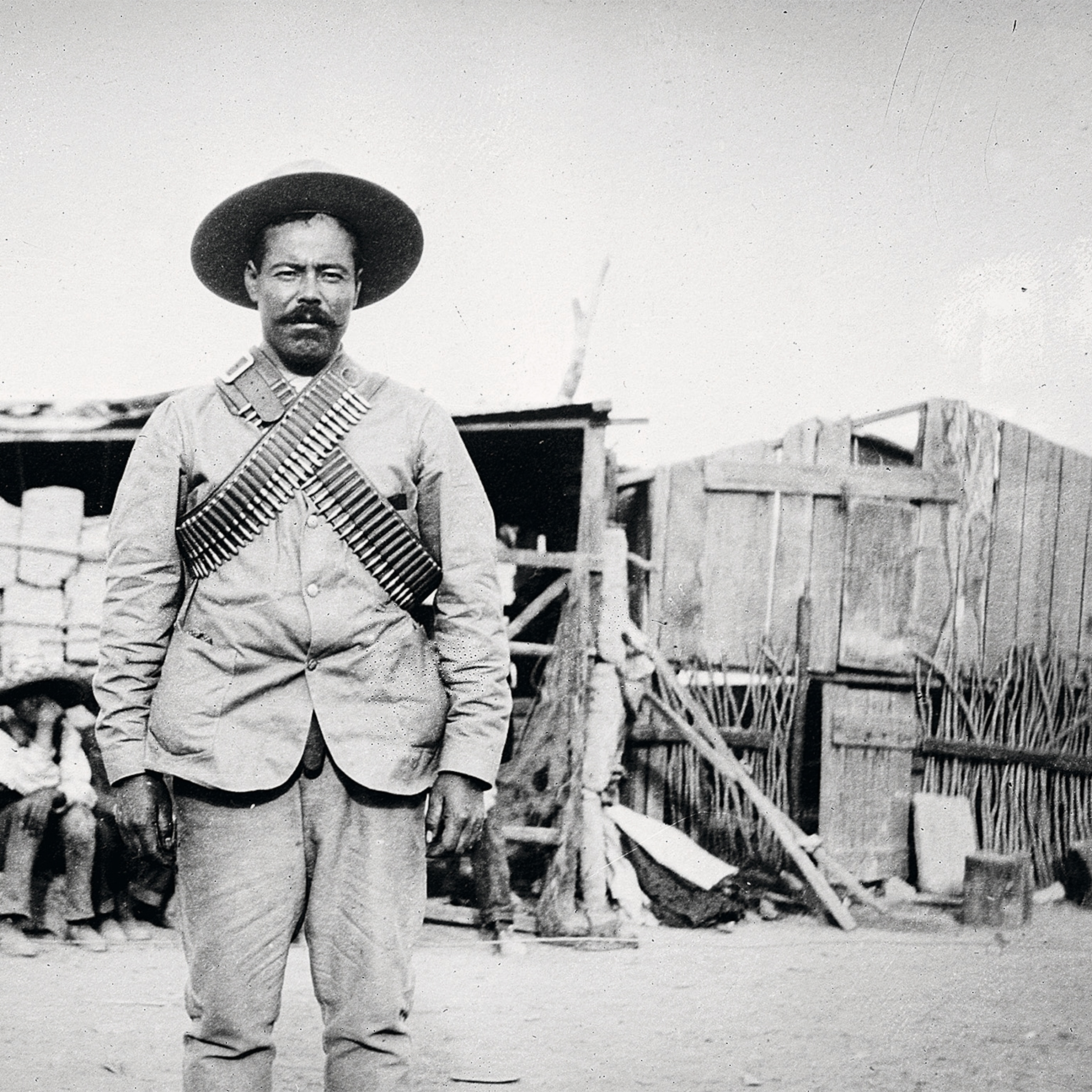
War Is Hell. Mary Roach Met the Folks Who Make It Less So.
These "white hat military scientists" try to keep soldiers alive and comfortable.
Mary Roach, a self-confessed “goober with a flashlight,” has created a niche for books with one-word titles—Gulp (on the digestive system); Bonk (on the science of sex)—that take a funny, and informed, look at the scientific secrets of everyday things. In her latest book, Grunt: The Curious Science of Humans at War, she goes behind the scenes of modern warfare to celebrate the unsung heroes of military science, who do everything from design high-tech clothing for the battlefield to perform penis transplants—all in the name of keeping soldiers "alive and comfortable." (Learn about the effects of battlefield blasts on soldiers' brains.)
Talking from her home in Oakland, California, she describes how the British instituted fly-kill quotas in World War II; why Velcro is a sniper’s enemy; and how improvised explosive devices (IEDs) can blow apart a soldier’s sex life. (Meet the dogs who go into combat.)
This is, by your own account, no Zero Dark Thirty. Tell us about the work of military scientists—and what inspired you to write a book about them?
I write about a particular military subset: white hat military scientists. I don’t cover weapons or strategies, building a better bomb or designing a submarine. It’s about the human entity: the soldier and everything that entity deals with—extreme heat, loud noise, fear and panic, food poisoning, and flies.
I got interested in the topic in an odd way. I was reporting a story in India on the world’s hottest chili pepper and in the course of my reporting I learned that the Indian Defense Ministry had weaponized this chili. So I went over to their science lab. I didn’t learn much about the chili pepper. [Laughs] But I found there were other interesting things going on, like a leech repellent they were testing in the river. There was also someone in another part of the Defense Ministry looking into telepathy. I remember thinking, Military science is not what we all think it is. It’s a little more esoteric and a lot broader. And it might make fertile Mary Roach territory. [Laughs]
You start your journey at the so-called Natick labs. Explain what they do—and why zippers are a problem for snipers.
Natick labs in Massachusetts is the lab that designs everything a soldier wears, eats, sleeps in, or carries—the accessories of being a soldier—as well as some more hard-core things, like camouflage or body armor. While I was there, I spoke to a fashion designer named Annette LaFleur, who was as beautiful as her name. She runs the design studios and was working on a top for snipers—a so-called “sniper bait suit.” She had a tailor’s dummy and was showing me this sniper’s top, explaining it looked kind of fashion-forward. It didn’t just button down the front, like most day-to-day combat uniforms. It had a side closure. When I asked her about it, she said, “If you have a jacket that zips up the front or buttons up the front, and you are a person whose job requires lying on your belly for hours at a time waiting for something to come into view, something you plan to shoot, then it’s very uncomfortable." I asked, Why couldn’t you use Velcro? And she said, “Velcro is loud, and if you undo it, it goes, crrrrunnnch, which could give away your position." The garment was designed to fit the unique occupation of being a sniper.

The military is a pretty macho culture—as a woman, how were you received?
It’s macho, definitely. But because I wasn’t asking to pick up a weapon and fight side by side with anyone, people were very polite and surprisingly open to my visiting. I didn’t so much anticipate problems of being a woman as being a reporter. The military slang term that gets applied to journalists embedding with troops and generally making a pest of themselves is “media puke.” The friendlier term is “pencil.” [Laughs]
But they were fairly open because the story I am telling is a good story for them: It’s the science helping to keep people alive and comfortable. Sometimes, negotiating this massive bureaucracy, it would take months to find the person who could say yes. No one was saying no. They were just saying, I can’t say yes, I’m not the one. So, I get shunted around a lot. Surprisingly, you know the only place I didn’t get in? The camouflage research facility at Natick. That work is classified. I was able to get on a Trident nuclear submarine. But I wasn’t able to get into the camouflage lab! [Laughs]
When Navy SEALs stormed Osama bin Laden’s compound, they were wearing TCAPS. Explain what those are—and why battlefield hearing loss is such an important issue.
When I was at Camp Pendleton, one of the Marine Corps bases, researchers from the hearing center were doing a study on the effect of moderate hearing loss on survivability (as in, did you emerge alive?) and lethality (how effective you were at hitting your targets). The researchers were running around in a paintball field and discovered there was a 50 percent drop in lethality/survivability.
TCAPS stands for Tactical Communication and Protective System. It’s basically a cuff you put over your ear, with a headset. The cuff is very good at blocking loud noise at the same time as a quiet voice is amplified. So, it’s smart hearing protection that decreases something that’s over a certain decibel level and amplifies the human voice. If you are storming a compound and things start to go kinetic, as they say, you will be able to communicate and still protect your hearing.
War is really, really loud. An M16 rifle shot is 160 decibels. So it takes a fraction of a minute to cause hearing damage if you don’t have protection on your ears. Especially with Special Operations, you see these 40-year-old guys with hearing aids because they’ve blown out their hearing—not just from rifles and bombs and antitank weapons, but from the personnel carriers. If you’re driving in a Bradley armored tank for hours on end, clattering along on the asphalt, it’s incredibly loud. It would be great if everyone in the military had TCAPS. But for now it’s mostly the Special Ops guys.
The British Army in Egypt in WWII instituted a fly-kill count among officers. It sounds like a Monty Python sketch. But it really happened, didn’t it?
[Laughs] It did! There was a fly-death quota, where everyone was supposed to kill 50 flies per day. Armed with pesticide sprayers and fly swatters, they fanned out and took the different corners of the base. [Laughs] Flies are handy mechanical vectors. They land on feces, pick up pathogens, then fly around and land on food.

During the Spanish-American war of 1898, there was a huge typhoid fever outbreak that the illustrious Walter Reed was called in to investigate. He’s the one who first figured out what was going on. He observed these flies walking around on the recruits’ food, with white dust on their feet. He thought, What is that? He realized it was lime they were throwing on dead bodies and in the latrines to try to control odor and bacteria. The flies had picked this up and were now walking around on the food. So, this war on flies began. There were fly control units and death quotas, and an occupation called military entomologist, which still exists today. There are WWII posters that say, “The Fly is your enemy!” with a giant fly bayonetted in the gut. [Laughs]
IEDs often cause heinous injuries to soldiers’ private parts. Tell us about the penis transplant research you witnessed at the Johns Hopkins Hospital—and why the Department of Defense “has a hard time embracing sex.”
For many years, there wasn’t a lot of call for genital reconstruction or penis transplant, for two reasons. One, there weren’t as many big explosives buried. Now, in Iraq and Afghanistan, there are really big, buried explosives and if you step on one, it’s not like a land mine in WWII, where it blows off just a foot. They are big enough to blow off the whole leg and damage the pelvic region. Normally, with that kind of injury, you would not survive. But today, the medevacs are faster and trauma care is better. So, more men are surviving who need reconstructive work.
Surgeons are not just working on rebuilding a penis, but also transplants. The first penis transplant actually happened a couple of weeks ago, at Mass General Hospital. But, about a year and a half ago, I was at Johns Hopkins for a run through. The surgeons had two cadavers but they didn’t go through the entire procedure. They were looking into which arteries are most important to hook up. It was amazing to see that procedure being worked out. And now it has happened.
At Walter Reed hospital, I spoke with a woman who does intimacy counseling. That is essentially counseling men who’ve had these kinds of injuries. Not just genital injuries, but say you’ve lost both hands and one leg. What kinds of sexual positions work? Nobody wanted to go near that. Nobody wanted to say, “Look, your sex life has been blown apart here. But there are things you can do.” A lot of these guys are also on heavy-duty painkillers or antidepressants, which affect their ability to get an erection. Many divorces happen after someone comes back. But the Department of Defense hasn’t stepped up to the plate to make sure there are people on staff who specifically do that. I asked this woman, Is it a budget issue? She said, “Maybe, that’s part of it. It’s perceived as a lifestyle issue and not made a priority. But it’s more the problem of getting the military to say, Yes, we think it’s important to spend taxpayer dollars on sex. They’re afraid to do that.”

Some readers may be surprised to discover that their tax dollars have been spent on so-called malodorant research. Give us a brief history of stink bombs.
A malodorant, as they call it, or stink bomb in the vernacular, can be used for clearing terrain. The smell is so vile—trust me—that it will be effective for throwing into a room you want to clear, rather than shooting people. [Laughs] They used them in Vietnam to clear Vietcong tunnels, and they’re relatively cheap in terms of taxpayer dollars. You basically just mix up some chemicals. The delivery system is sometimes a little tricky because, if they leak, you are going to have a lot of really unhappy people.
In WWII there were some noteworthy difficulties with a squirting tube that kept backfiring on the person who was spraying. The British developed something called S-Liquid, to hand out to resistance groups in occupied countries. They could then sneak up behind a German officer and squirt this stuff on his uniform to humiliate him and break his morale.
It could be your next book: Stink!
[Laughs heartily] Yeah!
You saw some pretty gruesome sights during your research, like cadavers being blown up for bomb-blast research. Did your trademark chirpy sense of humor ever desert you?
No. Well, yes. The cadavers weren’t blown up, and they were dressed in little Lycra outfits. They just looked like they had gone over a speed bump too fast. It’s only when you slowed the film down that you saw there had been an explosion underneath. It wasn’t really gruesome. But hearing the story of an army captain, who had stepped on an IED and was in Walter Reed for a number of surgeries over 18 months, that did fairly smother one’s perkiness.
This interview was edited for length and clarity.
Simon Worrall curates Book Talk. Follow him on Twitter or at simonworrallauthor.com.








